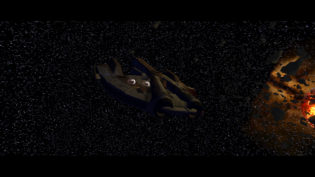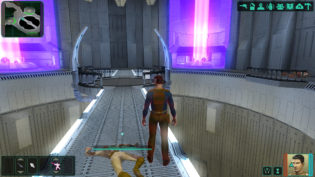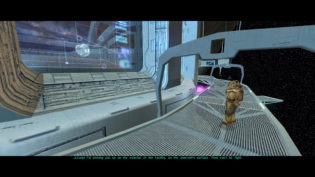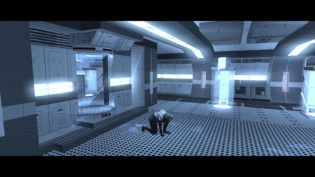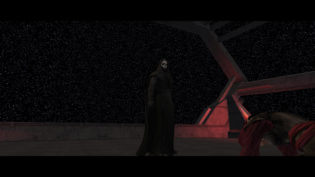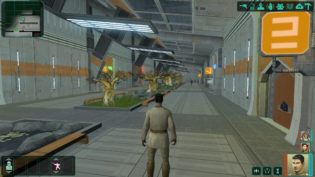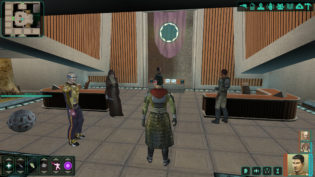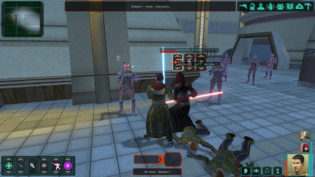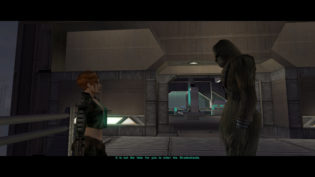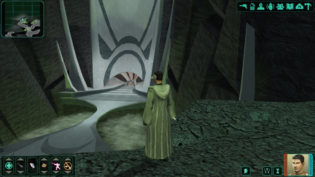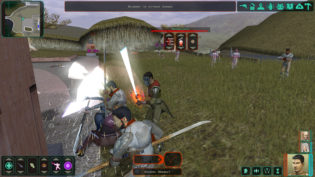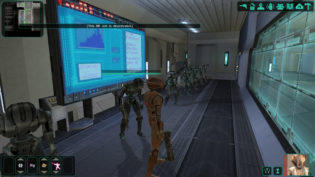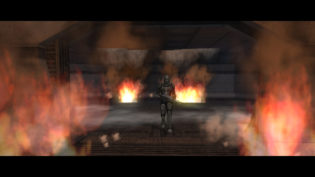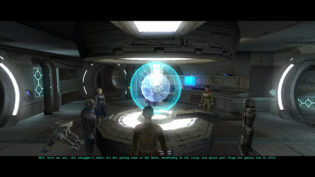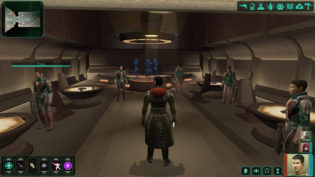O tempora is a series of retrospective posts where I play games from ages before to see if they stood the test of time.
There are several well known sad “oh what if they had more time” stories in video game development, where it’s well known that the game was launched in a state that was viewed by its own developers as incomplete. Not necessarily even buggy or full of issues, but not containing everything that has been already prepared and shipped, but locked and normally inaccessible. And to me, Star Wars Knights of the Old Republic II: The Sith Lords is the saddest example of them all. The first title of Obsidian Entertainment, a gathering of incredibly talented and experienced people from Black Isle Studios backed by new no less talented team members, it remains my personal favorite Star Wars story of them all. No really – there’s not a single other piece of SW-related media that is as good as this. Yet, even with a fantastic The Sith Lords Restored Content Modification (TSLRCM for short) that restores a lot of cut content in its current 1.8.6 version, the game occasionally feels incomplete and playing the game can be a frustrating experience.
Set several years after the end of the first KotOR, this game tells a story that is far more nuanced than anything the first game had to offer and, really, anything the SW media usually has to offer, as it delves far deeper into the concept of the Force and philosophy of the Jedi or the Sith. It is no longer a black and white story of Good People fighting Big Evil. It’s more of an exploration of how The Galaxy Far Far Away lives with its constant connection to the unseen connecting energy that seems to decide the fates of people and influence their choices. And how this unexplained idea is weaponised by opposing world views, with no “right” or “wrong” answers available.
Due to this, unlike the first KotOR, it’s not just the global story setting that is excellent, with the details and characters suffering. Everything is interesting and exciting to learn more about. Every companion you can get (and one of them even depends on your Light or Dark side path) is memorable and interesting, with their influence on you and your influence on them isn’t just interesting, but an integral part of the story. This was also the game that established (or I suppose re-established if we count Black Isle) the love of this development team to give you long dialogues debating difficulty questions, being able to give the playable character a strong world view. And also to use skill checks everywhere applicable to give the choice in how you develop the character in the gamey RPG systems a place in the world, so it can influence the way your character acts and even be part of the story.
Though, what’s even more curious and not something I picked on in my previous playthroughs of the game, KotOR II very often gives important information to the players, without giving it to the player character. There are multiple moments, very smartly chosen and selected, where the players get to see cutscenes and dialogues that show important plot points and big twists, without the playable character being present and consciously aware of them. Almost as if implying that either those elements are being subconsciously felt by the main character, or giving the player a story role in the game as an agent of the Force, influencing the choices of characters. As your perceptions of things get influenced by what you know, what the character you control as does not. It seems intentional, as the game even justifies gameplay mechanics with the story in a very clever way.
Whatever the intentions may be, the resulting story and the way its told is amazing and might easily be the strongest tale from Obsidian even to this day. But… it also might be the weakest gameplay experience of all their titles. The game can be very hard and depending on how you develop characters it can be even harder. There are moments, where it almost feels as if the title would want you to not get into the trap of “cleaning up the whole location” or “doing everything”, yet if you do play it “smart” you will be shooting yourself in the foot later, when you are forced into conflict and might find yourself underprepared. There are countless moments where your companions get to be the main character (even more in TSLRCM) and while they work fantastically story-wise, mechanically they often feel completely unbalanced. You have to smartly use every tool available to you, instead of just relying on attacks and normal offensive options, but even if you do, it might still not be enough to get through some areas without lowering the difficulty (which can be done at any point with no penalty) or save scumming your way through.
The game is in general more complicated in terms of gameplay, not just the story. Although, it is not always necessarily frustrating. A crafting system is introduced that expands the simple upgrade system from the first game. Interactions with companions also give or take away “influence” you have on them. Some skills are, actually, simplified instead – the implants are no longer tied to a skill, for example, and are now just dependent on the Constitution attribute. Mini-games are slightly reworked and the rather popular racing from the original game is now almost impossibly stupidly difficult for some reason. Multi-class as a concept returns, but is tweaked and an idea of prestige classes is introduced. Stuff still looks like it was straight up “borrowed” from DnD 3.5, but it mostly works just fine. Oh and what’s very different in terms of pacing is how many extremely long linear sections the game has in comparison to the first – after a very long linear intro section and apart from the non-less extended “end” section, even when you visit a planet you might get locked into a very long section which you cannot back out of.
Fortunately, the PC port of the game nowadays works pretty well after it has been updated in 2015. It has decent widescreen support that can be easily enhanced by the mods. Mods are easier to install, especially on Steam, where the game supports Steam Workshop. So I recommend the TSLRCM, widescreen UI fix and lightsaber colour fix whenever you decide to play the game yourself. Also you might look up how to correctly run the game in 60Hz mode as, unfortunately, just using a V-sync option might not help and the game breaks if your refresh rate is higher than that by not letting you move after exiting combat mode. Occasionally the game may also crash, though it’s relatively rare. And if you play the game for several hours suddenly all dialogues might start skipping without voices – restart the game to fix it. Sadly, no built-in fixes for these seem to exist right now. But the overall experience from the technical side of things is quite pleasant.
Whereas Knights of the Old Republic is still entertaining, but is otherwise almost entirely superseded by Mass Effect and Dragon Age, where BioWare revisited almost every good idea and made it better, Knights of the Old Republic II: The Sith Lords remains unique and unsurpassed. It’s a shame so much of its original intent is still lost or flawed in execution, even with the TSLRCM. And it’s a shame it can be a very frustrating game to play in terms of balance and general design missteps. But it’s a story unlike any other and I loved playing it again. If there could be a second chance or a remake given to a Star Wars game, this should be the one to get it, as even 19 years later KotOR II amazes and surprises. And I cannot recommend this game enough.


